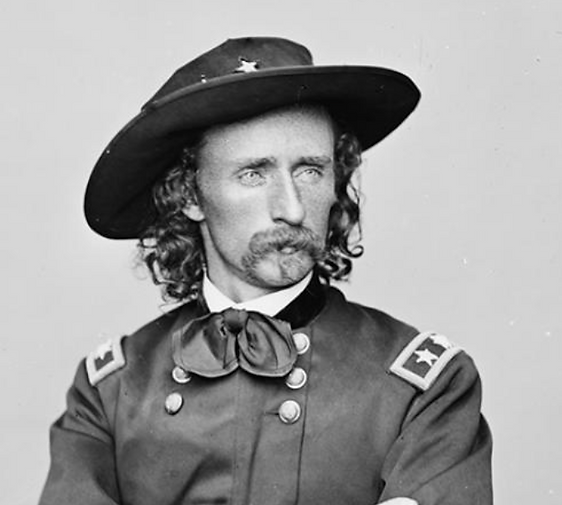526 - Custer Park - George Armstrong Custer

In 1910, the Bismarck Civic Improvement League changed the name of Riverview Park to “Custer Park”. Lieutenant Colonel George Armstrong Custer had commanded of the 7th Cavalry stationed at Fort Abraham Lincoln from 1873 until his death in 1876.
Custer was born in 1839 in New Rumley, Ohio, and attended West Point Military Academy where he graduated last in a class of 34 students on the eve of the Civil War. He enlisted in the Union cavalry and earned his fame at the age 23, when he became the youngest ever Brigadier General. He was present at the battle of Gettysburg, where he led a cavalry charge that thwarted Confederate General J.E.B Stuart, arguably saving the Union’s forces and the Union cause. By the end of the war, in 1865, “the Boy General” as he was known, was in command of an entire Cavalry Division and held the rank of Major General.
Custer was known for being a bold and fearless leader. But was also headstrong, rebellious, and rash.
Immediately following the Civil War, the U.S.-Dakota Wars erupted on the Northern Plains and resulted in the establishment of new military forts, increased military presence. Custer came to Dakota Territory in 1873, amidst an ongoing series of punitive campaigns against the Sioux, when the 7th Cavalry had been called to protect the Northern Pacific Railroad’s survey crews. By 1876, President Ulysses S. Grant would declare all Sioux and Cheyenne who did not report to reservations “hostiles” at war with the U.S. Lakota leaders Sitting Bull and Crazy Horse were not willing to submit to federal control, and prepared to defend their way of life to the death.
Custer was a talented self-promoter and, by the time he assumed command at Fort Abraham Lincoln in 1873, his was already a household name. He and close to 700 men were stationed at Fort Abraham Lincoln, on the west bank of the Missouri River. It was from Fort Lincoln that Custer led several famous expeditions, one of which was to scout locations for a military fort in the Black Hills of South Dakota that sparked a gold rush 1874 and brought throngs of settlers and prospectors to the region. His most famous expedition, of course, was his fateful campaign into Montana Territory where he was to engage the Lakota and Cheyenne. At the Battle of Little Bighorn, combined forces of the Lakota, Northern Cheyenne, and Arapaho under the leadership of Sitting Bull, Crazy Horse, Gall, Lame White Man, and Two Moons defeated Custer’s 7th Cavalry. The battle, also known as “Greasy Grass,” was an overwhelming victory for the Lakota and their allies and the zenith of their resistance to western expansion.
Today, you can visit the Camp Hancock State Historic Site in Bismarck and, across the river, tour reconstructed Custer House as well as soldiers’ barracks, blockhouses, and other major fort buildings at Fort Abraham Lincoln State Park to get a sense of military life at the time of U.S.-Dakota Wars. Learn about earlier conflicts between the U.S. Army and Lakota Sioux with a visit to General Sibley Campground and Park south of Bismarck.
